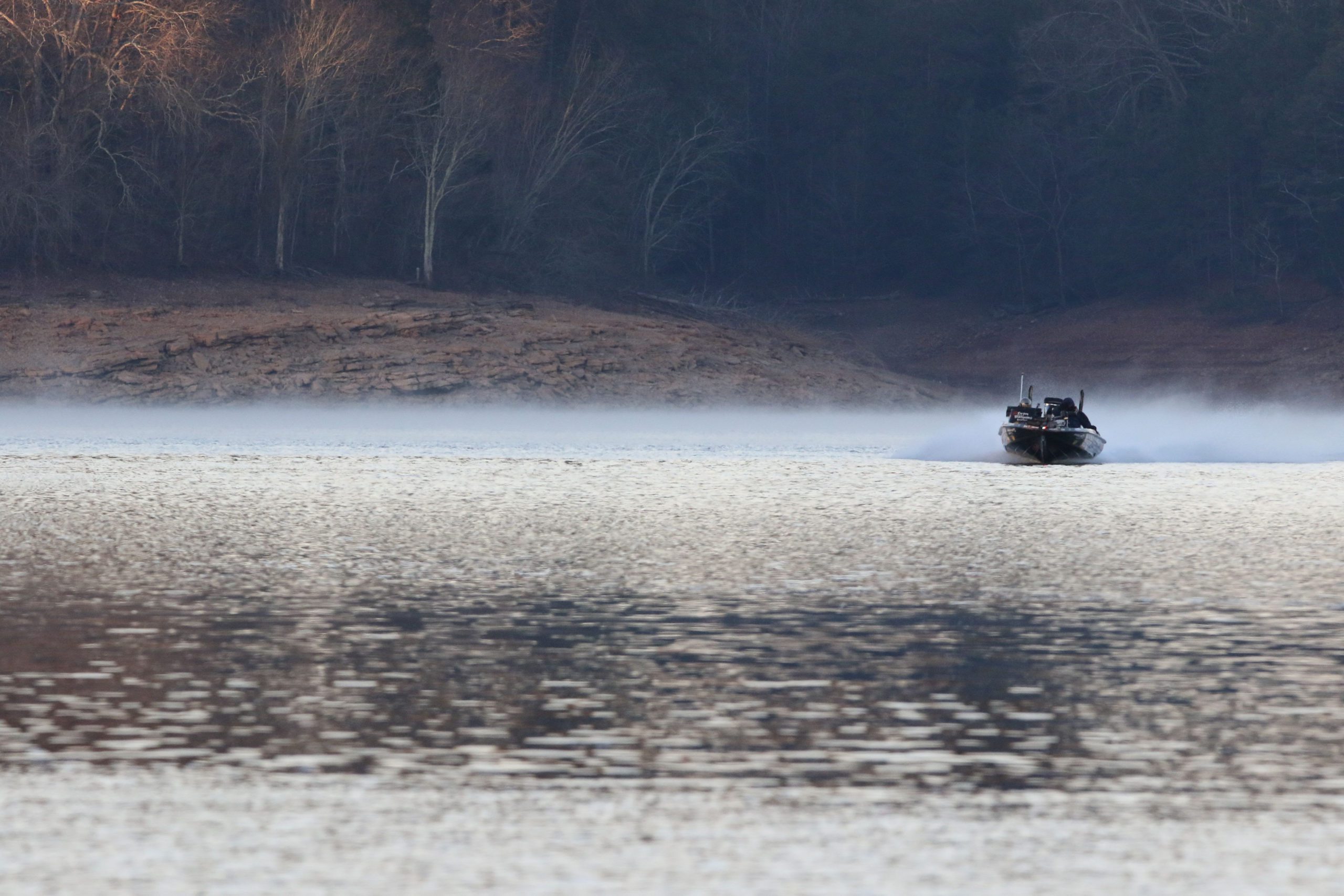Tennessee’s Cherokee Lake will host the Basspro.com Bassmaster Eastern Open Oct. 29-31, 2020.
Photo by B.A.S.S.
October 26, 2020
Mixed Bags Likely For Bassmaster Eastern Open On Cherokee Lake
[print_link]
JEFFERSON COUNTY, Tenn. — Smallmouth and largemouth bass both abound on Cherokee Lake, but Bassmaster Elite Series pro David Mullins believes it’ll take a mix of both to excel when the Basspro.com Bassmaster Eastern Open visits this Holston River reservoir.
Competition days will be Oct. 29-31 with daily takeoffs from TVA Cherokee Dam Boat Launch at 7:45 a.m. ET. Weigh-ins will be held each day at the same location at 3:30 p.m.
Mullins, who makes his home in Mount Carmel, Tenn., reports water temperatures in the upper 60s. That’s definitely headed in the right direction for fall’s unfolding, but it’s not there yet. Due to the lingering warmth, Mullins expects a tough early-fall event.
“To get it triggered here, it needs to be cold,” Mullins said. “The water needs to be in the low 60s or high 50s, and I don’t think it’s going to get there before the tournament. We have a forecast of 80 degree (daytime highs) coming up and we’re not going to get a real cooldown to make them bite.”
The 28,780-acre Cherokee Lake was impounded in 1941 by its namesake dam, which is located on the Holston River, about 52 miles upstream from its confluence with the French Broad River — the beginning of the Tennessee River. Given its location in the mountains of East Tennessee, where flash flooding is a common concern, Cherokee sees dramatic water management fluctuations, especially during the fall drawdown.
“The lake is (several) feet higher than normal for this time of year; and obviously, the more water you have, the more places fish can be in,” Mullins said. “That makes it tougher this time of year because it doesn’t condense them as much as it would when the water’s lower. The fish are probably more scattered out than they are in a normal year.
“I would rather fish in really low water than really high water. It gives the fish fewer options to be on (various spots).”
Describing Cherokee’s habitat as dominated by mud flats and large rock, Mullins said the lake also offers points, humps, pockets and marinas (no permanent docks, only floaters). Higher water, he said, brings more shoreline cover into play, but it also expands the required search effort.
Mullins also said recent years have seen increasing clarity. While largemouth thrive in stained water, he said the greater clarity has benefited the lake’s brown fish.
“In the last seven or eight years, the smallmouth population here has tripled,” he said. “We used to never fish for smallmouth at this lake and now, there are so many, it’s hard to beat them when the conditions are right.”
Mullins attributes the smallmouth boom to increasing water clarity. In recent years, he’s seen a decline in upstream agriculture, reducing turbid runoff and thereby improving the downstream habitat for the sight-feeding smallmouth.
“I would normally say all smallmouth would win (in the fall), but with the water being warm and high, I think you’ll see more mixed bags come into play,” he said. “You can catch smallmouth here until it gets hot in the summer and then it seems that they disappear until the water gets cold again.”
From experience, Mullins says the early fall stage that will greet anglers on Cherokee will accommodate a variety of techniques from the shoreline shallows to offshore spots as deep as 40 feet. Common Cherokee baits include topwater walkers, football jigs, small crankbaits, small swimbaits and drop shots.
“You can catch fish on all that this time of year because there’s not a set thing going on where they’re biting really good,” he said. “I think you’ll see fish everywhere. There’s going to be a lot going on.
“The majority of the largemouth live in the pockets and up in the river, and the majority of your smallmouth are going to live down the lake. Consistency is going to be the key, and the way you caught them the first day is probably not going to be the way you catch them the second day. You just have to wake up and roll with it.”
Mullins estimates it will take a three-day total of about 39 pounds to earn the $35,000 first-place prize.
Cherokee also holds spotted bass, but Mullins said he does not anticipate this species playing a significant role. Cherokee’s spots don’t grow big enough to amass a competitive limit; however, if bites are scarce, one good keeper could finish a limit.
“A big spot on that lake would be 14 inches,” he said. “If any bite counts and it’s hard to catch a limit, you could see some spots play.”
This will be the third of four events on the Eastern Open slate for this year. The Top 4 anglers from the final Eastern Open and Central Open standings will receive Elite invites, along with the Top 4 from the overall combined standings from both divisions. The winner of the overall standings will be crowned Falcon Rods Bassmaster Opens Angler of the Year and earn a cash prize of $10,000.
Jason Christie of Park Hill, Okla., is currently leading the Falcon Rods Bassmaster Opens Angler of the Year race, while Scott Martin of Clewiston, Fla., tops the field in the Eastern Open standings.

